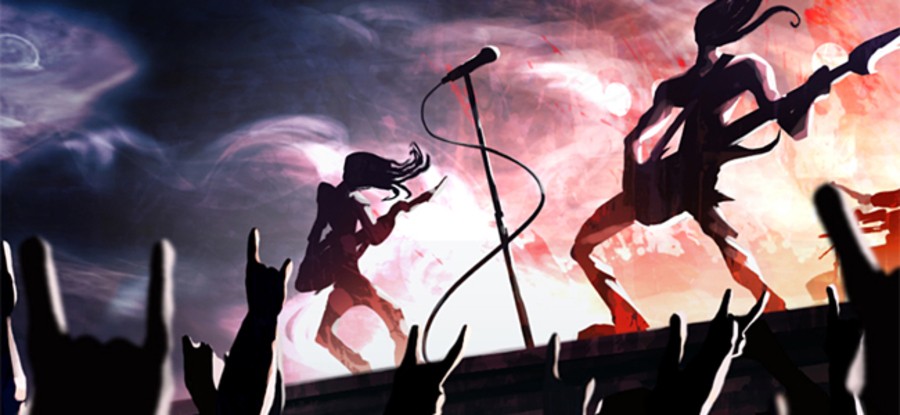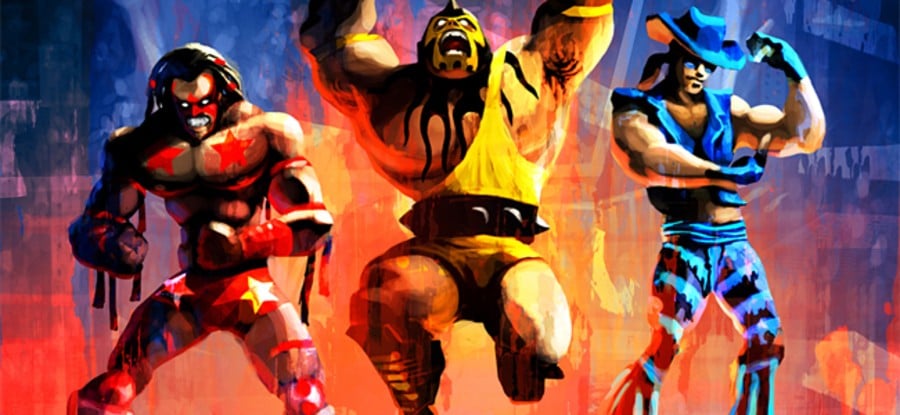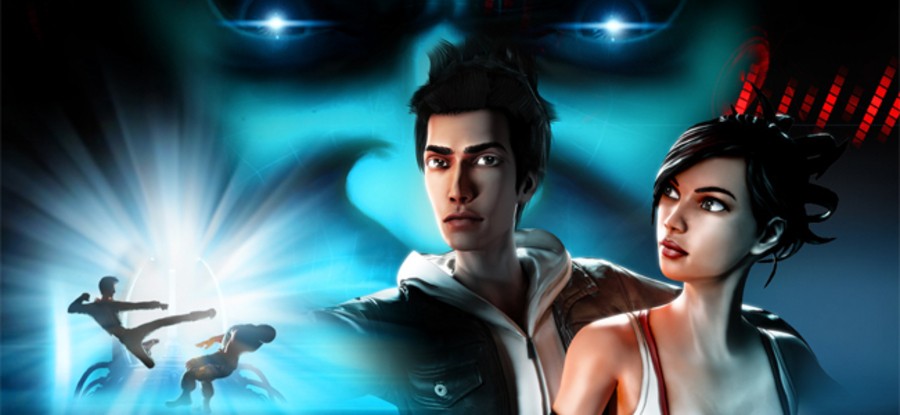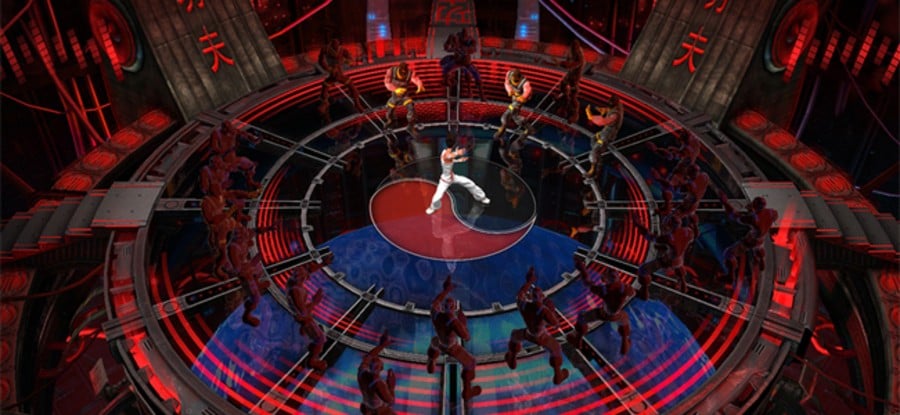
Kick! Punch! Dance! It’s all in the mind! Zen Studios may be best known for its exhaustive roster of pinball tables, but the studio has been quietly perfecting its mastery of dance over the past few years. KickBeat, which was originally announced as a PlayStation Vita exclusive over a year ago, has been in production for some time now, but has finally returned to the spotlight with a PlayStation 3 partner in tow. To celebrate the title’s release in North America, we laced up our tap shoes and hit the town with creative director Neil Sorens to learn a little more about the game’s inspirations – and try to find what took the title so long to hit digital store shelves.

Push Square: KickBeat is based upon a really awesome premise. Can you tell us a little bit about the inspiration behind blending martial arts and music? Where did the initial idea come from? How has the original pitch evolved during development?
Neil Sorens: Originally, the idea was Dance Dance Revolution with kung-fu battle scenes. Guys would run at you from four directions, like the directional arrows in DDR. There was also a ‘duel’ mode, where you'd fight one-on-one with more powerful enemies that took multiple hits to defeat. And since the Nintendo Wii had just been shown for the first time at E3 – yeah, this idea is really old – it was based upon motion controls.
It came about when I was thinking about why rhythm games didn't have compelling onscreen action in the foreground. All those bars, arrows, and icons were always the main focus, and any characters dancing or playing instruments were just scripted background fluff. KickBeat addressed that by making the characters themselves the action cues.
Although the original premise has survived relatively intact, we made several changes over the course of development. In order to make the game relatively platform agnostic, for example, we went with standard controller inputs rather than motion controls. This also allowed us to do precision beat-matching, as input lag for current-gen motion controls prevents that.
We never did come up with a good way to implement the duels using just 3D characters, so we dropped them. It's unfortunate, because these would have made the game feel more like a kung-fu film, but if you look at something like [downloadable title] Way of the Dogg, you can understand why we made that choice.
We also made the characters circle around you rather than run in straight lines, much like in the dojo scene from Fist of Fury. The problem there was that when the enemies came in straight lines, we had to zoom out too far to give the player enough time to react and to put enough relative distance between enemies that the player could tell which was first and how far apart they were. The arc movement allowed us to get closer to the action and put more focus on the fight animations.
Finally, we added the double-tap and hold-and-release control mechanics for additional gameplay depth and better correlation to the music.
PS: Talk a little bit about the challenges that you've faced nailing the animation system. Most rhythm games only really need to map button prompts to the music, but you've essentially had to beat-match dozens of moves, too. Would you say that that's been the most difficult part of the project?
NS: Yes, combining precision beat-matching and elaborate character animations was a huge challenge. We started off by using motion capture and a more realistic visual style, but the animations just weren't as quick or responsive as we wanted. We ended up rewriting the whole animation system to work differently and hand-animated hundreds of animations to replace the motion-captured ones. These animations were unrealistically fast, so we had to modify the visual style of the characters and environments so that these new animations would look natural.
The animation was only one of several major challenges that almost killed the project multiple times during its development.

PS: We suspect that music licensing was another big challenge, but you've got some big names in your soundtrack. Can you tell us a little bit about the process of signing those acts? Was it a more difficult undertaking than you expected? Can you tell us about any artists that you wanted in the game but just couldn't get?
NS: We expected it to be difficult, and it was. It took about two years to put together, with someone working on it continuously. Finding the right tracks was hard enough, but getting all of the necessary approvals and fitting them into a fairly small budget seemed to be impossible.
Generally, licensing a song just involves contacting the publisher and the artist management for the song rights and the artist management for the master recording rights, which are two different things – and the reason why a lot of music games end up with cover versions. Publishers weren't too tough because they just wanted the money, but they were often very slow to respond to requests, and had a lot of hang-ups there because we had no big reputation or game franchise to pitch them. Being a small company in a former Soviet satellite didn't open any doors, either. And some songs just have extremely complicated rights with different owners in different regions, 20 different contributors who have to say, “Yes."
Though we are thrilled with the end result, we had to get really creative to fill out the final spots. And we didn't get several of the tracks that I really wanted. I had originally envisioned the game being set to the Beastie Boys' Sabotage, and our first prototype was built around this song. Denied. I'd also wanted Ludacris' Get Back, a song that's pretty much all about fighting. Denied. Metallica, Eminem, and The Prodigy have some other good tracks that we weren't able to sign. All in all, we had a list of probably 85 plus songs as primary candidates or backups, and over half of them weren't usable.
On the other hand, [American record label] FiXT were incredibly easy to work with, and we were able to sign a bunch of songs we wanted from them. The indie artists such as Voicians and Shen Yi were also very enthusiastic about the project, and licensing their music was straightforward. Now I'm rooting for those guys, and hoping that their music will get a little more attention as a result of KickBeat.
PS: What was the inspiration behind the art style? Some of the assets that you've released remind us of movies like Step Up – were they an influence at all? What sort of media did you look at to establish the game's look?
NS: I'm actually not sure if Step Up was an influence, as I wasn't directly involved with the finalisation of the art style. I was involved at the start of it, though, and the first thing I sent the artists was the Eminem iPod commercial. We developed highly stylised, high contrast concept art based on that.
After trying a more realistic look for the prototype, we went back to the saturated, high contrast style at the same time as we were redoing the animations.

PS: The game was announced for the Vita a long time ago but has only just re-emerged with a PS3 port in tow. We're guessing that you weren't originally planning to release the game on the PS3, so is that why the title's taken so long? Why did you decide to expand to the console, too?
NS: We actually started development on KickBeat in 2009 on the PS3, long before the Vita was a thing. Once Sony shared Vita information with us, and we realised that moving the game there wouldn't be too hard – powerful device, good SDK – we did so. The game is a natural fit for handheld gaming, as it's designed to be played in short bursts – the length of a song – and the Vita's button layout still fits the control scheme perfectly.
Although the PS3 version fell into disrepair, we kept creating assets for both the PS3 and Vita, just in case. And as positive feedback and interest in the game grew from both players and Sony, we realised that getting the PS3 version back up and running was our best option. It actually didn't push the release date back by more than maybe a month max – the long development time was really just the result of getting everything polished and finalised on the Vita.
PS: You're releasing this as a cross-buy title. Why have you decided to take that route? What's in it for you as a small developer to support that initiative?
NS: We've always tried to avoid charging people multiple times for the same content in Zen Pinball, too. All of our pinball tables are cross buy and import for free from the original games into the sequels. We're all gamers, and we wouldn't want to have to pay twice for the same experience, especially when Sony makes it so easy for developers to avoid that.

PS: Players will be able to import their own music into the game, but will have to complete a beat-matching process first. How tough was it developing an intuitive method that enables all types of music to be compatible with the game?
NS: The core issue here is that automatic beat detection just isn't accurate enough. Even the best algorithms in the world are only going to be accurate maybe 65 per cent of the time. And KickBeat is a precision beat-matching game, not one where the music plays a more nebulous role in generating content, like Audiosurf or Beat Hazard, so the beat information fed into the track generator has to be accurate.
As a result, we needed to provide players with a way to come up with that beat data. The calculation tool makes this as simple as possible by just having the player tap out the beat while listening to different sections of the song. We had a similar tool in-house to help with finding the beat for the songs that we were hand-scripting. The challenge was just coming up with an interface and procedure that worked but wasn't too complex.
Even if players aren't able to get good results with that tool, though, they can get the beat information from anywhere else: a friend who's gotten better results, the official KickBeat forum – where we'll be helping people with exactly that – or a hypothetical master list of beat information that some superfan puts together. It's just two numbers: BPM and beat start time, the offset from the start of the song to the first beat. Get them from any source, and you can enter them manually rather than having to use the calculation tool. In fact, if two people have identical source files and identical beat settings, they'll generate identical tracks, which allows for unofficial high score competition among friends.
PS: Finally, what are your plans for the PlayStation 4? Are you working on the system yet? Are there any plans to bring KickBeat to the console? How about Zen Pinball 2?
NS: Yes, we're working on the PS4, but we don't have anything to announce yet.
You can check out our review of KickBeat through here. Are you planning to put your musical martial arts to the test? Let us know in the comments section below.

Comments 1
Narrator:"The music must not be lost"
Old Man:"Even Justin Bieber?"
Quick transition xD
Show Comments
Leave A Comment
Hold on there, you need to login to post a comment...